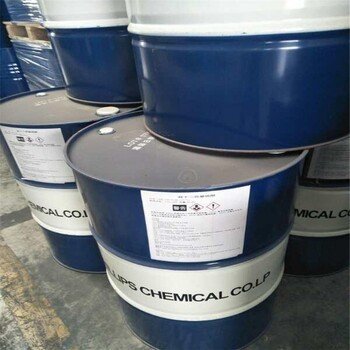Toluene diisocyanate (TDI) production process and formula
Chemical Structure of Toluene Diisocyanate
TDI is defined by its precise molecular structure: CH₃C₆H₃(NCO)₂. The compound exists in two main isomeric forms, 2,4-TDI and 2,6-TDI, with the former being more prevalent in industrial applications. These isomers differ slightly in the arrangement of their functional groups on the aromatic ring but share similar properties and reactivity.
This compound consists of two isocyanate groups (-NCO) attached to a toluene base. Isocyanate groups are highly reactive, enabling TDI to form strong bonds with other molecules, particularly those containing hydroxyl (-OH) groups. This bond-forming ability is key to its success in creating durable polymer products like polyurethane.
For a deeper dive into the chemical breakdown of TDI, check out this comprehensive guide on TDI’s structure.

Significance of TDI in Modern Applications
Why does TDI matter so much? Its chemical properties make it indispensable in crafting flexible and rigid foams, coatings, elastomers, and adhesives. These materials are part of various everyday products:
- Furniture and Bedding: TDI is a core material in flexible polyurethane foam, often used in cushions and mattresses.
- Automotive Industry: It contributes to seating foam, insulation, and even parts of vehicle coatings.
- Construction Materials: TDI plays a role in weather-resistant coatings and adhesives used in construction projects.
TDI’s extensive use isn’t just about versatility; it’s also about durability. Polyurethane products owe their resilience and long-lasting performance to the strong molecular bonds created by TDI’s reactive nature. An in-depth overview of TDI’s applications highlights just how deeply the chemical is integrated into everyday manufacturing.
Production Process of Toluene Diisocyanate (TDI)
The production of toluene diisocyanate (TDI) involves a series of chemical reactions to transform raw materials into a commercially valuable product. Each step—nitration, hydrogenation, and phosgenation—requires precise control to ensure efficiency and yield. Below, we outline the three main stages of this method.
Step 1: Nitration of Toluene
The process begins with the nitration of toluene, where toluene reacts with mixed acid, a combination of concentrated sulfuric acid and nitric acid. This reaction introduces nitro groups (-NO₂) into the toluene molecule, creating dinitrotoluene (DNT).
- How It Works:
- Sulfuric acid acts as a catalyst, enhancing the formation of nitronium ions (NO₂⁺) from nitric acid.
- These ions attack the aromatic toluene ring, resulting in the desired substitution.
This step produces a mixture of 2,4-dinitrotoluene and 2,6-dinitrotoluene, which are both needed in subsequent steps. The controlled environment ensures minimal by-product generation. If you’d like to explore the process in more detail, this detailed guide on the nitration of toluene is a helpful resource.

Step 2: Reduction to Toluene Diamine
The next phase involves converting dinitrotoluene (DNT) into toluene diamine (TDA), a critical intermediate.
- Key Details:
- DNT is exposed to a hydrogen-rich atmosphere under controlled high temperature and pressure.
- Industrial setups often use a catalyst such as nickel or palladium to facilitate the reaction.
This step effectively replaces the nitro groups with amine groups (-NH₂), turning DNT into TDA. You can review this resource on DNT reduction to TDA for further details.
Step 3: Reaction with Phosgene
The final step involves reacting toluene diamine (TDA) with phosgene (COCl₂) to produce toluene diisocyanate (TDI). This reaction occurs in either a liquid or gas-phase environment, depending on production technologies and scale.
- Phosgenation Explained:
- Phosgene reacts with the amine groups on TDA, replacing hydrogen atoms to form isocyanate groups (-NCO).
- By-products such as hydrochloric acid (HCl) are captured and recycled to minimize waste.
Advanced techniques like atomization-assisted phosgenation have emerged to improve efficiency and reduce environmental impact. For deeper insights, check out this research on TDA phosgenation methods.
Efficient coordination among these three steps results in high-purity TDI, ready for use in polyurethane production and other industrial applications. Each chemical reaction builds on the previous one, creating a seamless process from start to finish.
Future Trends in TDI Production
As industries evolve, the production of toluene diisocyanate (TDI) is increasingly shaped by cutting-edge technology and sustainable practices. This shift ensures TDI remains both cost-effective and environmentally friendly, meeting the demands of a rapidly changing global market.
Technological Advancements: Shaping the Future of TDI Production
Modern production technologies are transforming how TDI is manufactured, enhancing efficiency and minimizing environmental impact. What drives these changes? A mix of automation, artificial intelligence, and next-generation equipment.
- Automation and AI: Many facilities are integrating automation and AI-powered systems. These tools improve precision in chemical processes, reduce waste, and optimize energy consumption. For example, sensors and IoT devices monitor real-time reactions, ensuring higher product quality and reducing errors. Read more about AI trends impacting TDI production here.
- Sustainable Processes: There’s a growing focus on eco-friendly alternatives. Research continues into bio-based isocyanates, which could replace petroleum-derived precursors used in TDI manufacturing. In addition, companies are reducing emissions from phosgenation reactions through state-of-the-art filtration systems. Learn about bio-based innovations in TDI.
- Energy Efficiency: Modern plants are using energy-efficient systems, such as advanced heat exchangers and renewable energy integration, to lower costs while remaining competitive. Explore how energy efficiency impacts TDI markets.
By embracing these advancements, manufacturers are not only improving production but also addressing growing concerns around resource conservation and regulatory compliance.
Conclusion
Toluene diisocyanate (TDI) plays a critical role in modern manufacturing. Its unique molecular formula, CH₃C₆H₃(NCO)₂, and reactive properties make it indispensable for producing polyurethanes used in countless industries.



